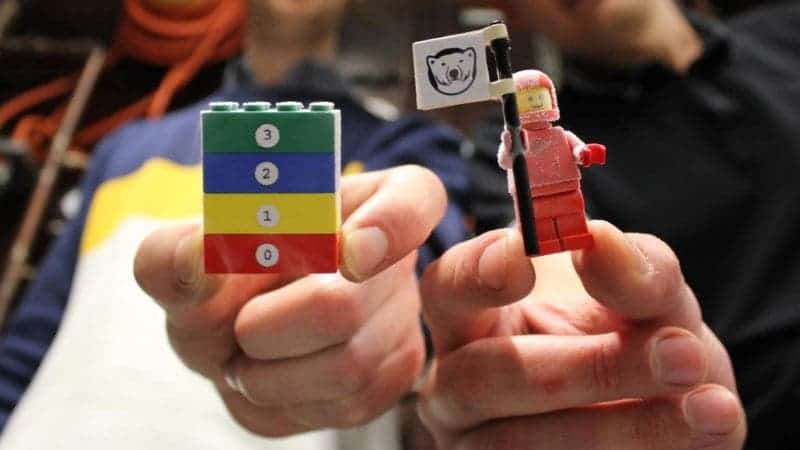
LEGOs have always found their use in cool scientific experiments, but new developments from Lancaster University in the UK took things to a whole new level. Using a sophisticated setup, the researchers chilled LEGO bricks extremely close to absolute zero (the coldest temperature possible) and, in the process, gained useful insights that might one-day help us build better quantum computers.
Brick by brick
Quantum computers are machines that operate on qubits or quantum bits, rather than classical bits (1s or 0s). By exploiting the quirky nature of quantum mechanics, such machines are able to encode information in 1s, 0s, or both states at the same time. This allows quantum computers to perform computations orders of magnitude more complex than a classic computer is capable of doing.
Two-qubits can perform operations on four values, three on eight values and so on in powers of two. Today’s computers have millions of transistors. Now imagine a quantum logic gate that works with millions of qubits. The computing force would be unheard of.
In October, Google made a controversial announcement, claiming its machines have reached “quantum supremacy” — a term that describes crossing the threshold where quantum computers can do things that conventional computers cannot.
The main challenge that quantum computers face is qubits failing due to decoherence caused by vibrations, temperature fluctuations, electromagnetic waves and other interactions with the outside environment, which ultimately destroys the exotic quantum properties of the computer.
This is why quantum computers are such cumbersome machines — they require a huge setup that involves pumps, compressors, and liquid nitrogen in order to chill things close to absolute zero.
But, where do LEGOs fit into all this? As it so happens, LEGOs have thermal properties that make them highly appealing for insulating a quantum computer’s components.
In an experiment, physicists at the University of Lancaster stacked four LEGOs and introduced them in a special refrigerating device that mixes two helium isotopes to generate ultra-cold temperatures.
The bottom of the stack was placed right where the isotopes mix while the top brick was fitted with a small heater and thermometer.
The bottom LEGOs were exposed to frigid temperatures ranging from 70 milliKelvin to 1.8 Kelvin — up to thousands of times colder than outer space.
Despite the ultra-cold temperature, heating the top LEGO brick barely changed the temperature of the bottom brick, making LEGOs extremely good thermal insulators. In fact, they performed better than some of the most expensive plastics on the market used for this purpose, the researchers reported.
All of this doesn’t mean that we’ll see LEGO bricks in quantum computers any time soon (or who knows, really?). Instead, the insights gained by the study could be used to design insulators that are custom made for perfect integration with the demands of quantum computing.
“This work suggests that custom-built modular materials with even better thermal performance could be readily and cheaply produced by 3D printing,” the authors wrote.
The findings were reported in the journal Scientific Reports.



